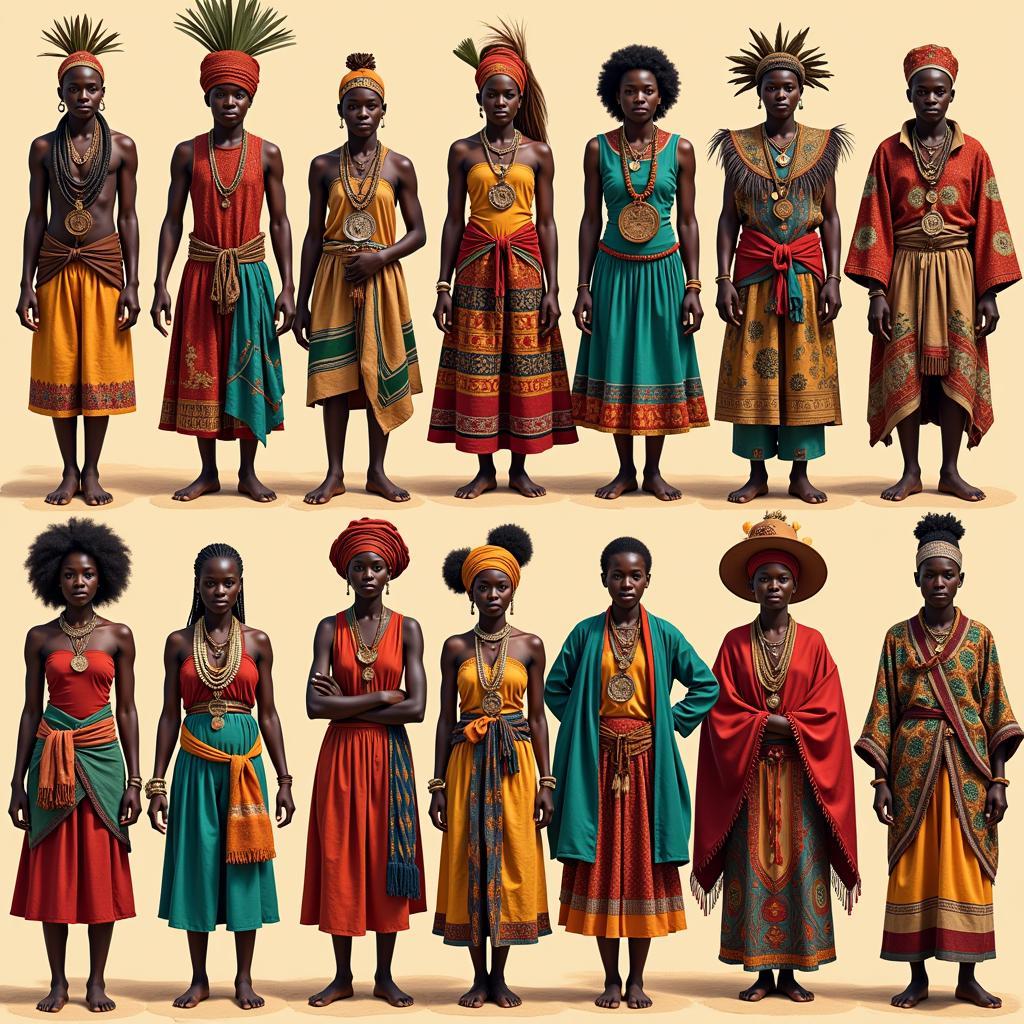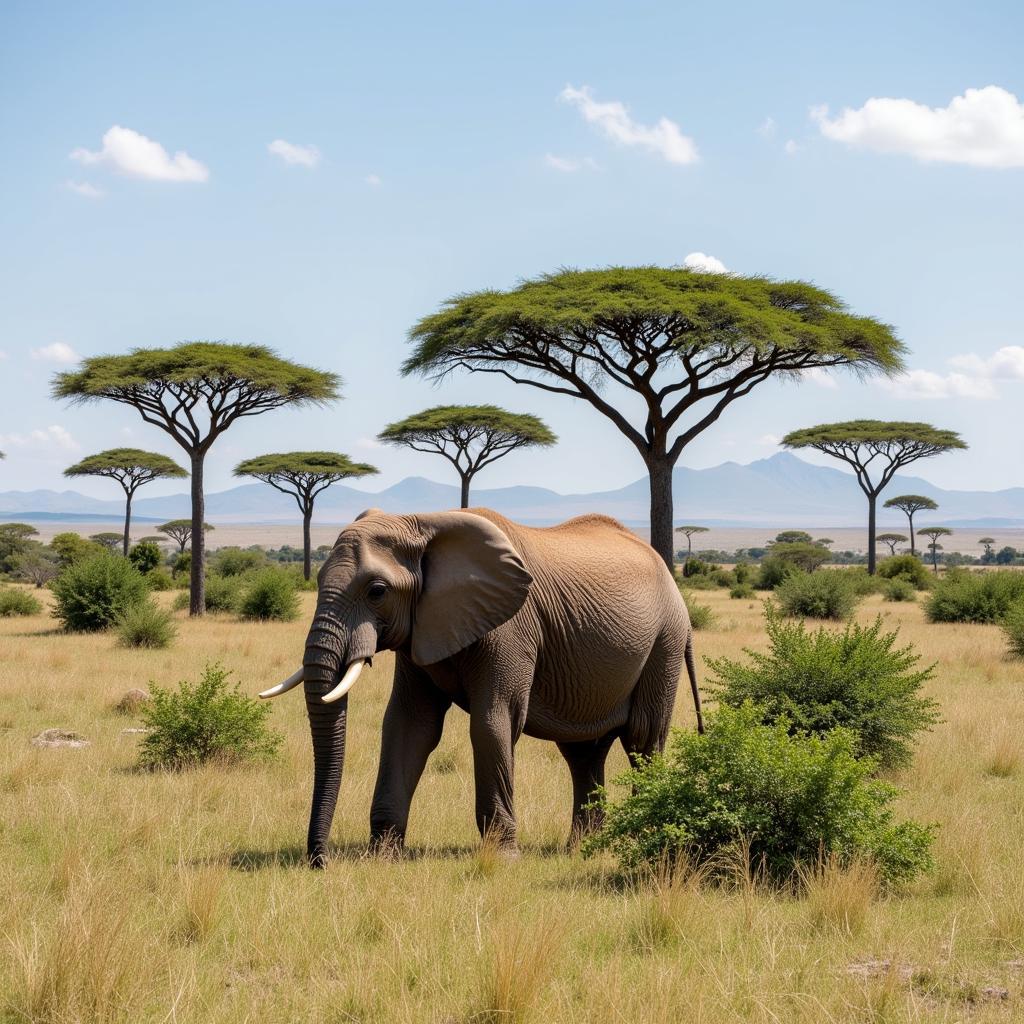A Comprehensive African Art Timeline
African art history spans millennia, showcasing a diverse range of artistic traditions, styles, and materials across the continent. Understanding the African Art Timeline offers valuable insights into the cultural, social, and religious beliefs of various African societies. This timeline explores key periods and developments, revealing the rich tapestry of African artistic expression.
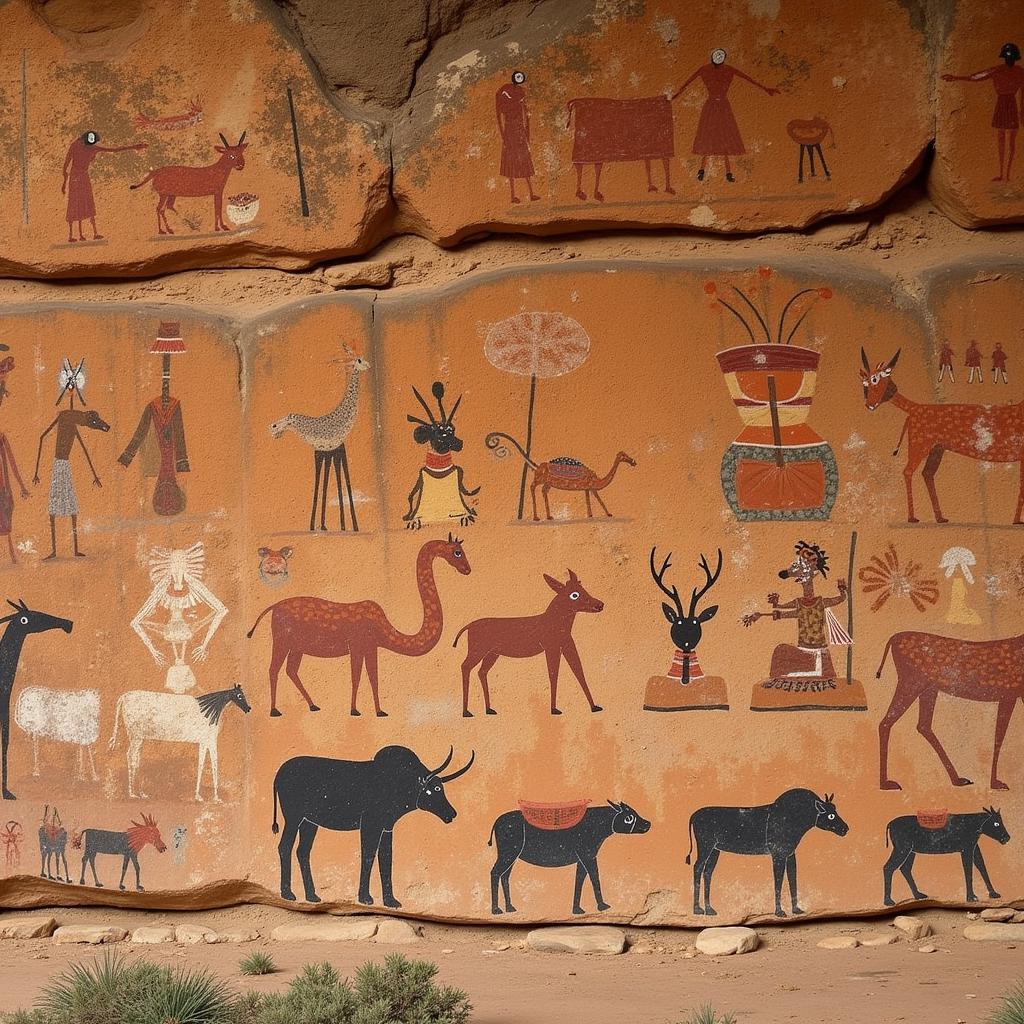 Ancient African Rock Art Timeline
Ancient African Rock Art Timeline
From the earliest rock paintings to contemporary sculptures, African art has consistently reflected the dynamic relationship between humans and their environment. Early forms of artistic expression often served ritualistic purposes, connecting communities to their ancestral spirits and the natural world. Examining the african american art history timeline can provide an interesting comparison and highlight the connections and influences between African art and the art created by the African diaspora. This connection is further explored when studying the African diaspora before slavery, revealing the rich cultural exchanges that existed prior to the transatlantic slave trade.
Prehistoric Art: The Dawn of Creativity
The earliest evidence of African artistic expression dates back to the prehistoric era, with rock art serving as a powerful testament to the creativity of early humans. These paintings, found across the continent, offer invaluable glimpses into the lives, beliefs, and practices of ancient African societies.
Rock Art: A Window into the Past
Rock art sites, like those found in the Tassili n’Ajjer mountain range in Algeria, showcase a remarkable range of styles and subjects. From depictions of animals and hunting scenes to abstract patterns and geometric designs, these paintings provide valuable insights into the evolving worldviews of prehistoric communities.
Ancient Egypt: A Legacy of Grandeur
Ancient Egypt, with its sophisticated civilization, produced some of the most iconic art in African history. From monumental pyramids and elaborate temples to intricate sculptures and vibrant tomb paintings, Egyptian art reflected a deep reverence for the pharaohs and the afterlife.
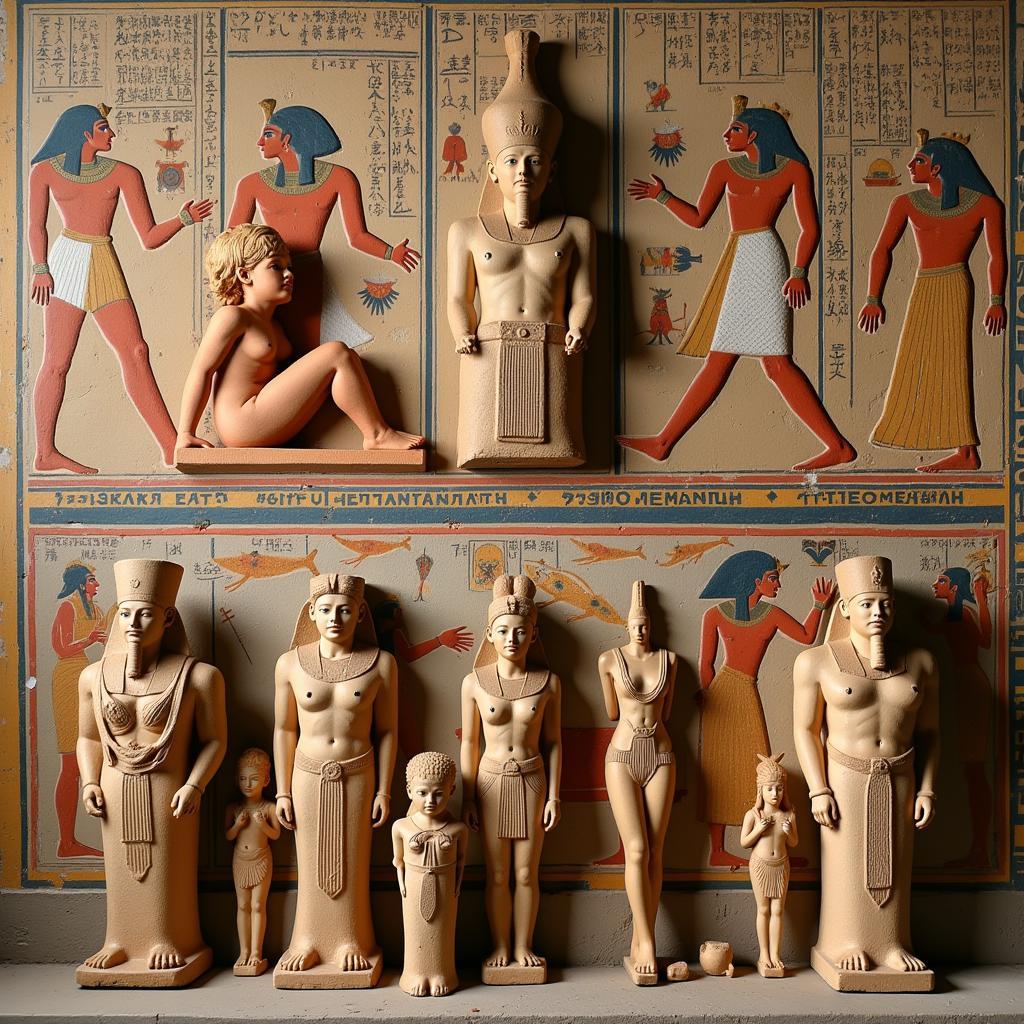 Ancient Egyptian Art: Sculpture and Painting
Ancient Egyptian Art: Sculpture and Painting
Pyramids and Temples: Monuments to Power
The construction of massive pyramids and elaborate temples served as powerful symbols of pharaohic power and divine authority. These architectural marvels, adorned with intricate carvings and hieroglyphic inscriptions, stand as enduring testaments to the ingenuity and artistic skill of ancient Egyptian artisans.
Sub-Saharan Africa: A Tapestry of Traditions
Sub-Saharan Africa boasts an incredibly diverse range of artistic traditions, each reflecting the unique cultural heritage of its respective communities. From intricate masks and elaborate sculptures to vibrant textiles and decorative pottery, the art of Sub-Saharan Africa embodies a rich tapestry of artistic expression. For a look at a specific cultural tradition, consider exploring African American wedding photography to see how traditional African aesthetics and practices influence contemporary celebrations.
Masks and Sculptures: Ritual and Representation
Masks and sculptures played a central role in many Sub-Saharan African societies, often serving ritualistic purposes and embodying spiritual beliefs. These objects, crafted from a variety of materials, including wood, metal, and ivory, often depicted ancestral spirits, deities, or important figures within the community.
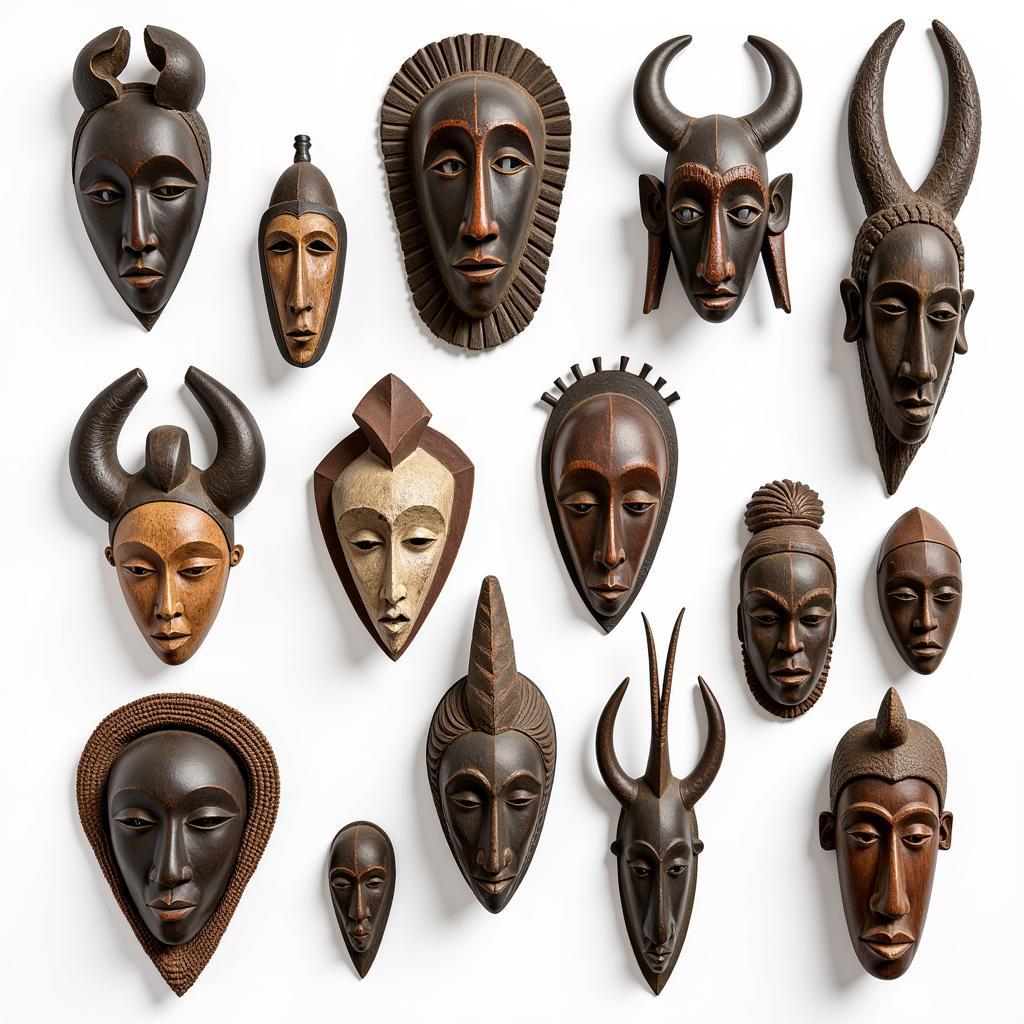 Sub-Saharan African Masks and Sculptures
Sub-Saharan African Masks and Sculptures
“African art isn’t just about aesthetics,” says Dr. Adebayo Olabiyi, a renowned art historian specializing in African art. “It’s about storytelling, about connecting to the past, and about understanding the complex interplay between the spiritual and the material world.”
The Modern Era: A Renaissance of Creativity
The 20th and 21st centuries have witnessed a renaissance of African artistic creativity, with artists exploring new mediums and engaging with contemporary themes. From painting and sculpture to photography and film, African artists continue to push the boundaries of artistic expression, challenging conventional notions of African art and its place in the global art world. Looking at African American names from the 1950s can provide insights into the cultural shifts and influences shaping identity during this period.
“African artists are not simply mimicking Western styles,” explains Dr. Chika Okeke-Agulu, a leading scholar of contemporary African art. “They are forging their own paths, drawing on their rich cultural heritage while simultaneously engaging with the complexities of the modern world.” The discussions surrounding African ancestors of human beings’ history offer another layer of understanding the deep roots and complexities of the continent’s cultural landscape.
Conclusion: A Continual Evolution
The african art timeline reveals a vibrant and ever-evolving tapestry of artistic expression. From the earliest rock paintings to contemporary artistic innovations, African art reflects the rich cultural heritage, diverse traditions, and dynamic history of the continent. By exploring this timeline, we gain a deeper appreciation for the profound impact of African art on the global artistic landscape.
FAQ
-
What are the oldest examples of African art?
Rock paintings and engravings, found across the continent, are the oldest examples. -
What is the significance of masks in African art?
Masks often play a central role in rituals and ceremonies, representing spirits, ancestors, or deities. -
What are some key characteristics of ancient Egyptian art?
Ancient Egyptian art is characterized by its monumental scale, intricate details, and focus on the afterlife. -
How has African art influenced contemporary art?
African art has had a profound influence on modern and contemporary art, inspiring artists around the world with its diverse forms and expressive power. -
Where can I learn more about African art?
Museums, galleries, and academic institutions dedicated to African art offer valuable resources for further exploration. -
How is African art evolving in the 21st century?
African artists are embracing new mediums and engaging with contemporary themes, pushing the boundaries of artistic expression. -
What is the importance of studying the african art timeline?
Studying the timeline provides a comprehensive understanding of the evolution of artistic styles, techniques, and cultural influences across different periods in African history.
Need support? Contact us 24/7: Phone: +255768904061, Email: [email protected], or visit us at Mbarali DC Mawindi, Kangaga, Tanzania.
